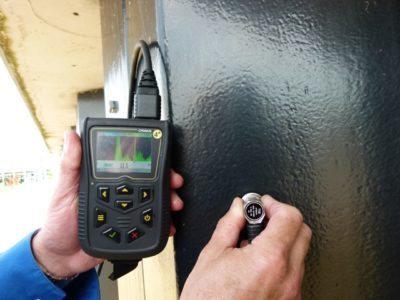Ultrasonic thickness gauges are indispensable tools in various industries such as manufacturing, aerospace, automotive, and petrochemicals. They serve a critical role in quality control and maintenance, helping to measure the thickness of materials like metal, plastic, and glass without the need for invasive procedures. While it’s clear that these devices are incredibly useful, understanding the technology behind them can offer a deeper insight into their applications and limitations. In this article, we will delve into the technology that powers ultrasonic thickness gauge.
The Principle of Ultrasonics
The fundamental technology behind ultrasonic thickness gauges is ultrasonic waves. These are sound waves that have frequencies higher than the upper limit of human hearing, usually above 20 kHz. When these waves encounter a material, some are reflected back, while others penetrate through it. By measuring the time it takes for these waves to be reflected, one can calculate the thickness of the material in question.
Components of an Ultrasonic Thickness Gauge
An ultrasonic thickness gauge mainly consists of three components:
- Transducer: This is the component responsible for emitting ultrasonic waves. It usually uses piezoelectric crystals that generate sound waves when an electric current is passed through them.
- Processor: The processor receives the reflected ultrasonic wave from the transducer and calculates the time taken for the round trip of the wave.
- Display: The calculated thickness is then displayed in a user-readable format, generally as a digital readout.
The Measurement Process
- Calibration: Before using the gauge, it’s crucial to calibrate it against a material with a known thickness. This helps to ensure the accuracy of the device.
- Couplant Application: A liquid or gel, known as a couplant, is applied to the surface of the material you’re measuring. This ensures better transmission of ultrasonic waves.
- Emission and Reception: The transducer emits ultrasonic waves that travel through the material. These waves are then reflected back to the transducer.
- Calculation: The processor calculates the time it took for the waves to travel to the material and back. Using the speed of sound in the specific material, the processor then calculates its thickness.
Advantages and Limitations
Advantages:
- Non-Destructive: One of the most significant benefits of using ultrasonic thickness gauges is that they’re non-destructive. You don’t need to cut, drill, or disassemble parts to measure their thickness.
- Accuracy: When calibrated and used correctly, these gauges can be incredibly accurate, often to within a few micrometres.
- Versatility: They can be used on a wide variety of materials, provided the material allows the transmission of ultrasonic waves.
Limitations:
- Material Properties: Not all materials are conducive to ultrasonic thickness measuring. Some materials may absorb the ultrasonic waves, making measurement difficult.
- Surface Condition: The quality of the surface can affect the accuracy of the measurement. Rough or corroded surfaces may require special techniques or equipment.
- Skill Required: Proper use of these devices requires training. An unskilled operator may obtain incorrect measurements.
Applications
Given their capabilities, ultrasonic thickness gauges are used extensively across various sectors. In manufacturing, they’re vital for quality control, ensuring that produced parts meet specific thickness requirements. In the aerospace industry, they’re used to check the thickness of aircraft components as part of regular maintenance and safety checks. They’re also invaluable in the petrochemical industry, where they’re used to measure the thickness of pipelines and tanks, aiding in the prevention of leaks and failures.
Conclusion
Understanding the technology behind ultrasonic thickness gauges can not only deepen your appreciation for these vital instruments but can also help you make more informed choices when selecting and using a gauge. With their non-destructive testing capability, high accuracy, and broad range of applications, ultrasonic thickness gauges remain an essential tool in modern industry.
By grasping how they function, you’ll be better equipped to harness their full potential, ensuring both the quality and safety of materials and structures in various industrial applications.





